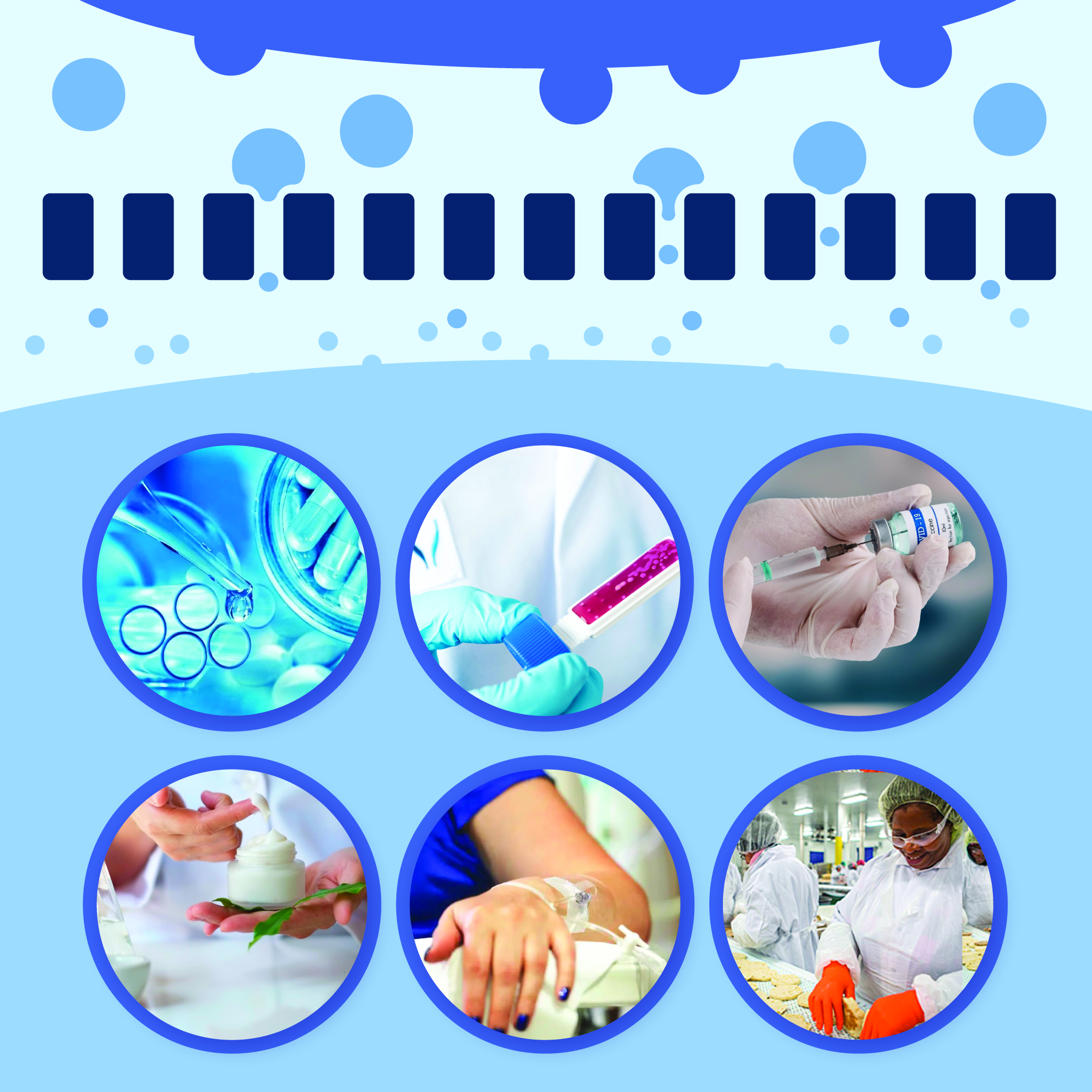Application of Liposomes and Liposome Extrusion in Medical and Food Industry

In last month’s article, we discussed what liposome extrusion is, its methods, and applications. This month, we will highlight several practical applications for liposomes.
The term Liposome (1) is derived from Greek words “lipos” and “soma” meaning fat and body, respectively. They are formed into tiny spherical vesicles composed of a phospholipid bilayer membrane and due to their biodegradability, biocompatibility, and nontoxicity together with several of its ameliorated attributes, these liposomes are used in many fields including pharmaceuticals, nutraceuticals, and cosmeceuticals.(2) They are popularly used as models for biological membranes, diagnostics, nutrients, and other bioactive agents thru which these tiny spherical vesicles can be filled with drugs and other bioactive compounds that are used to deliver drugs and biological agents for different purposes.(3)
Numerous studies for the pharmaceutical application (4) of liposomes have appeared during the past few decades. Here are some applications of liposome and liposome extrusion in the medical and pharmaceutical industry:
Vaccine and drug delivery:(5) Liposomes are showing promise as intracellular delivery systems (6) for antisense molecules, ribosomes, proteins/peptides, and DNA, they are used as carriers for vaccines to enhance their efficacy which can protect the vaccine from degradation and enhance its delivery to immune cells, leading to a stronger immune response. As drug vehicles,(3) liposomes exhibit outstanding properties, such as protecting the encapsulated substances from physiological degradation, extending the half-life of the drug, controlling the release of drug molecules, (7) and excellent biocompatibility and safety.
Drug Targeting: The approach for drug targeting via liposomes (8) involves the use of ligands (e.g., antibodies, sugar residues, apoproteins or hormones), which are tagged on the lipid vesicles. The ligand recognizes specific receptor sites and, thus, causes the lipid vesicles to concentrate at such specific target sites. By this approach, the otherwise preferential distribution of liposomes into other organs (liver, spleen, and bone marrow) is averted or minimized.
Cancer and gene therapy: Liposome are considered one of the most well-established nanomedicines in cancer therapy and bioimaging (9) as a great delivery system with their flexibility and versatility by resembling the biological cell membrane and adopting a lipid bilayer structure which provides protection and solubilization of both hydrophilic and hydrophobic agents. Since they are biocompatible and low in toxicity they are utilized to encapsulate and facilitate the intracellular delivery of chemotherapeutic agents (10) as they have been found to reduce systemic toxicity compared with other existing free drugs.
Cosmetology: Liposomes are well-known vesicular cosmetic delivery systems.(11) The topical application of liposomes offers a wide range of advantages including increased moisturization, restoring action, biodegradability, biocompatibility and extended and slow dermal release. Their comparable structure to biological membranes allows penetration into the epidermal barrier, compared with other delivery systems, and is later found as a suitable delivery system in the management of cosmetic disorders.
While in food, beverage, and nutraceutical industries, (12) liposome and liposome extrusion has been used in the development of functional foods and beverages that provide health benefits beyond basic nutrition. Liposomes have the ability to entrap food additives, preservatives, and antimicrobials, (13) resulting in enriched flavors and increased bioavailability of the contents. For example, liposomes can be used to deliver antioxidants, anti-inflammatory agents, and probiotics, among other functional ingredients.
Food formulations: Liposomes enhance the properties, such as solubility, stability, slow, or controlled release, bioactivities including antioxidant and antimicrobial activities, bio accessibility, and bioavailability, of encapsulated plant bioactive compounds and extracts, thereby displaying the aptness of utilizing those vesicles in food formulations.(13) The utilization of liposomes in food matrices has resulted in augmented sensory attributes (13) resulting to improved quality of the foods and further exhibiting the relevance of liposomal applications in food industry.
Overall, liposome extrusion is a valuable tool in the pharmaceutical industry for the preparation of liposomes. It’s also a promising technology in the food and beverage industry that can help improve the functionality and health benefits of food products.
References:
- Choudhury, A. et al. (1970) Liposome: A carrier for effective drug delivery, Journal of Applied Pharmaceutical Research. Creative Pharma Assent. Available at: https://www.neliti.com/publications/320114/liposome-a-carrier-for-effective-drug-delivery
- Karami, N., Moghimipour, E. and Salimi, A. (2018) Liposomes as a novel drug delivery system: Fundamental and Pharmaceutical Application Available at: https://www.researchgate.net/publication/325228939_Liposomes_as_a_Novel_Drug_Delivery_System_Fundamental_and_Pharmaceutical_Application_DEFINITION_AND_HISTORY
- Daraee, H. and Etemadi, A. (2014) Application of liposomes in medicine and drug delivery, Taylor & Francis. Available at: https://www.tandfonline.com/doi/full/10.3109/21691401.2014.953633
- Wagner, A. and Vorauer-Uhl, K. (2010) Liposome technology for industrial purposes, Journal of Drug Delivery. Hindawi. Available at: https://www.hindawi.com/journals/jdd/2011/591325/
- Liu, P., Chen, G. and Zhang, J. (no date) [PDF] a review of liposomes as a drug delivery system: Available at: https://www.semanticscholar.org/paper/A-Review-of-Liposomes-as-a-Drug-Delivery-System%3A-of-Liu-Chen/5e4a520e326db98595dd5aadca455baf47e5c729
- Akbarzadeh, A. et al. (2013) Liposome: Classification, preparation, and applications - discover nano, SpringerLink. Springer New York. Available at: https://link.springer.com/article/10.1186/1556-276X-8-102
- Allen, T.M. et al. (2012) Liposomal drug delivery systems: From concept to clinical applications, Advanced Drug Delivery Reviews. Elsevier. Available at:https://www.sciencedirect.com/science/article/pii/S0169409X12002980
- Dua, J.S., Rana, A.C. and Bhandara, A.K. Review article liposome: Methods of preparation and applications. Available at: https://romanpub.com/resources/ijpsr%20v11-2020-6.pdf
- Cheung, C., and Al-Jamal, W.T. (1970) Liposomes-based nanoparticles for cancer therapy and bioimaging, SpringerLink. Springer International Publishing. Available at: https://link.springer.com/chapter/10.1007/978-3-319-89878-0_2
- Allahou, L.W., Madani, S.Y. and Seifalian, A. (2021) Investigating the application of liposomes as drug delivery systems for the diagnosis and treatment of cancer, International Journal of Biomaterials. Hindawi. Available at: https://www.hindawi.com/journals/ijbm/2021/3041969
- Rahimpour, Y. and Hamishehkar, H. (2012) Liposomes in cosmeceutics, Taylor & Francis. Available at: https://www.tandfonline.com/doi/full/10.1517/17425247.2012.666968
- Liu, W., Singh, H. and Thompson, A. (2013) Liposomes as food ingredients and nutraceutical delivery systems. Available at: https://www.researchgate.net/publication/286187753_Liposomes_as_food_ingredients_and_nutraceutical_delivery_systems
- Pamunuwa, G.K. and Karunaratne, D.N. (2022) Liposomal delivery of plant bioactives enhances potency in food systems: A Review, Journal of Food Quality. Hindawi. Available at: https://www.hindawi.com/journals/jfq/2022/5272592/


![Join Sterlitech at BIO 2024 [Booth #5558]: Exploring the Future of Biotechnology](https://www.sterlitech.com/media/blog/cache/300x200/magefan_blog/b4.jpeg)



